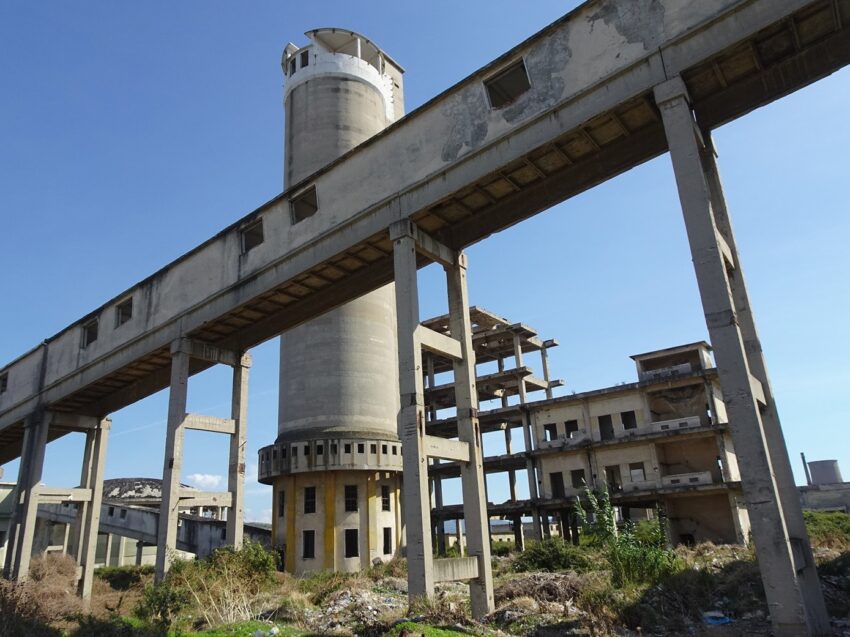Albania’s turbulent past means that there are many interesting historical traces all over the country. A lot of places have been turned into memorial sites and museums, like Shkodër’s sobering Site of Witness and Memory.
Other sites have been given over to abandonment and decay, and are great destinations if you’re like us, fans of urban exploration. Without really planning for it, we came across a number of fascinating abandoned places on our travels through Northern Albania.
Here’s a list of our favourite ‘lost places’ that we explored in the country.
This post may contain affiliate links, and I might earn a small commission at no additional cost to you. For more info, click here.
Our 5 Favourite Abandoned Places in Albania
The idea of this list was to present as varied a selection of abandoned sites in Albania as possible, so we picked our respective favourites amongst forgotten military complexes, industrial plants, residential buildings and cultural sites.
King Zog’s Villa in Durrës
This Neo-Classicist villa was probably our favourite of the abandoned places we visited in the country. It was originally built in 1927 for King Zog I., who reigned Albania until 1939, and was intended as a grand residence, symbolizing a modernizing monarchy in a turbulent era.
Over time, it changed hands several times, at one time also serving as a residence for Communist president Enver Hoxha. Walking through the overgrown gardens and crumbling interior, we were struck by how many details of the former splendour can still be made out.
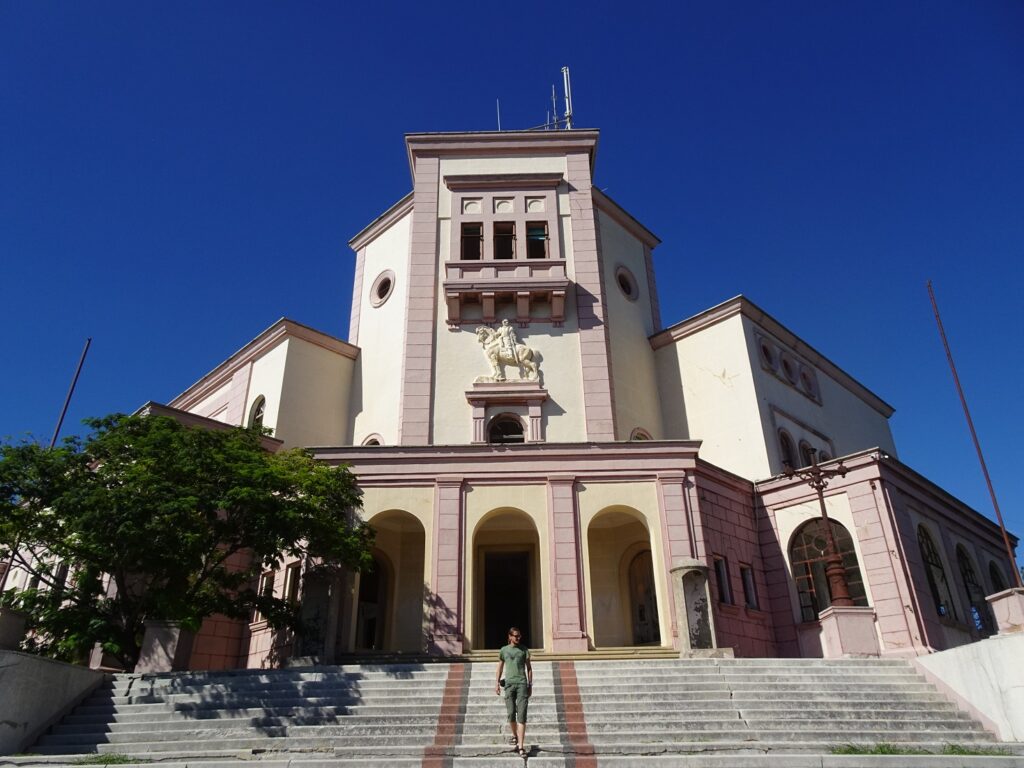
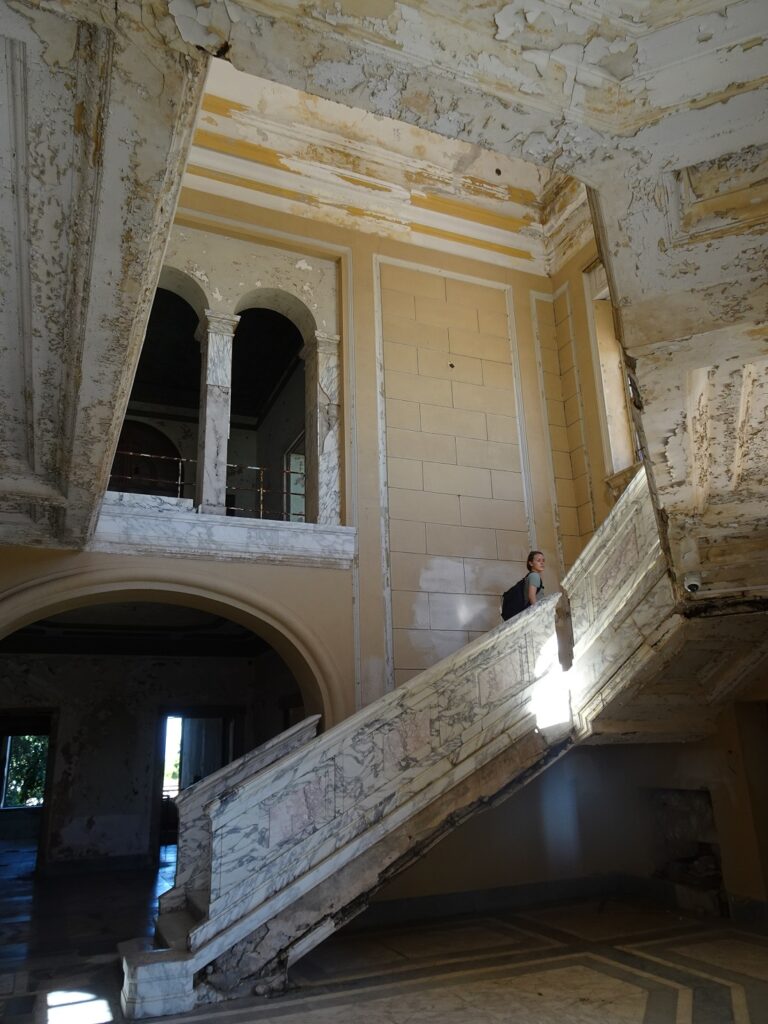
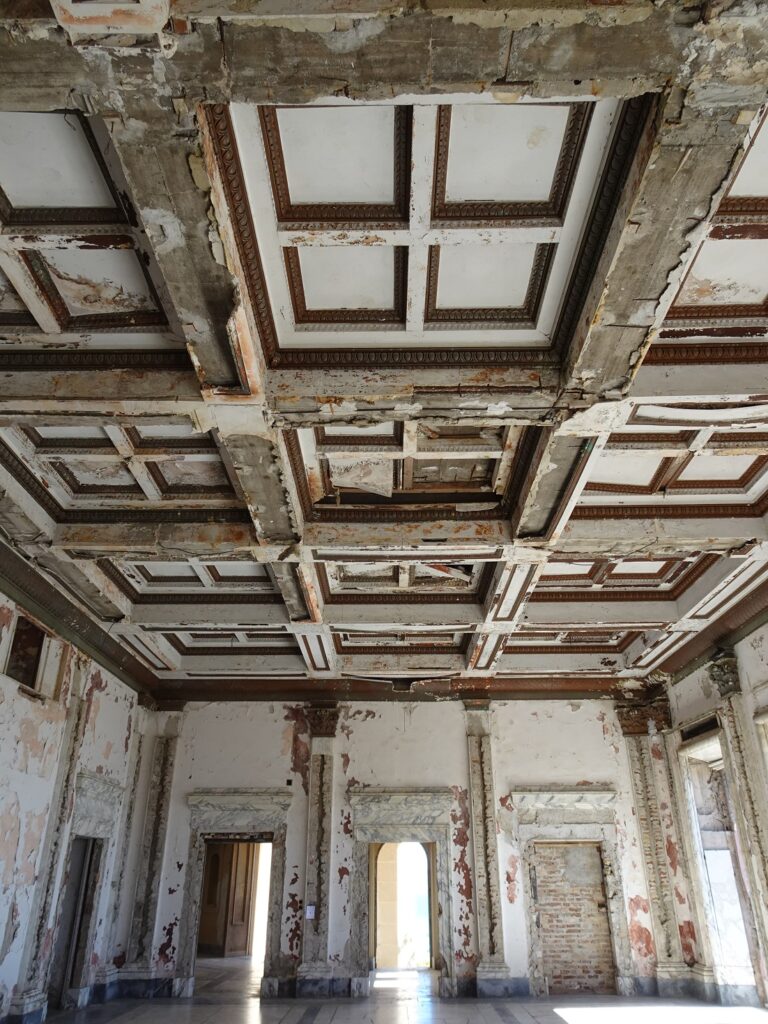
We were especially impressed by the ornate coffered ceilings in lots of the rooms and the many balconies, all of which have great views of Durrës and the Ocean. To us, the most impressive room was the old banqueting hall, which nowadays is populated by legions of pigeons.
Halfway up the wall is a window front, with a hidden room behind it that was actually used to spy on the guests. The entrance hall with its grand marble staircase was also impressive. There are lots of informational signboards inside the building, explaining the original use of the rooms, and we spent almost an hour exploring every nook and cranny of the building and grounds.
Using the servant’s stairway in the back, you can climb all the way to the very top of the building for awesome views in all directions, and there are a few half-hidden secret passageways in the eerie basement that are fun to explore.
The villa sits on a hill overlooking Durrës, about one kilometre north-west of the Roman Amphitheatre. There’s a guy collecting an entrance fee of 300 Lek at the main gate, which we thought was a small price to explore this amazing place.
Kukës Underground City
One of the strangest legacies of Albania’s communist era lies below the small mountain town of Kukës, in the country’s northeast. Spreading out under the city, there is a massive subterranean complex, consisting of miles of interlocked tunnels and bunker rooms. They were built in the 1970s to serve as a civil defence for up to 10,000 people in case of an ‘imperialist invasion’.
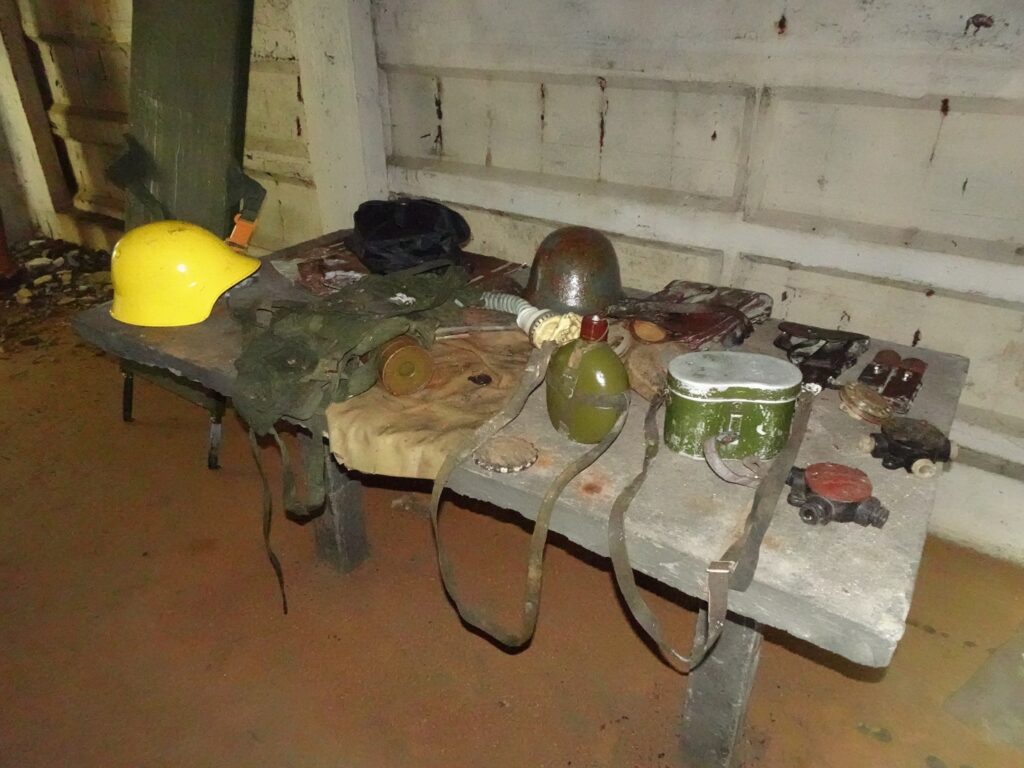
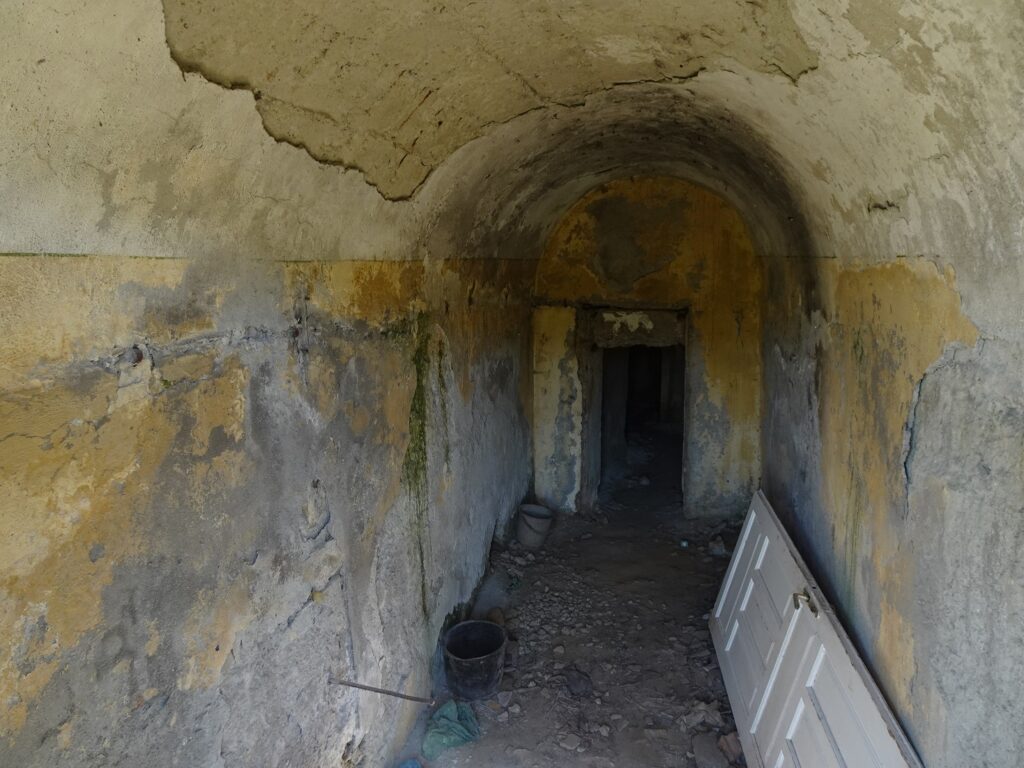
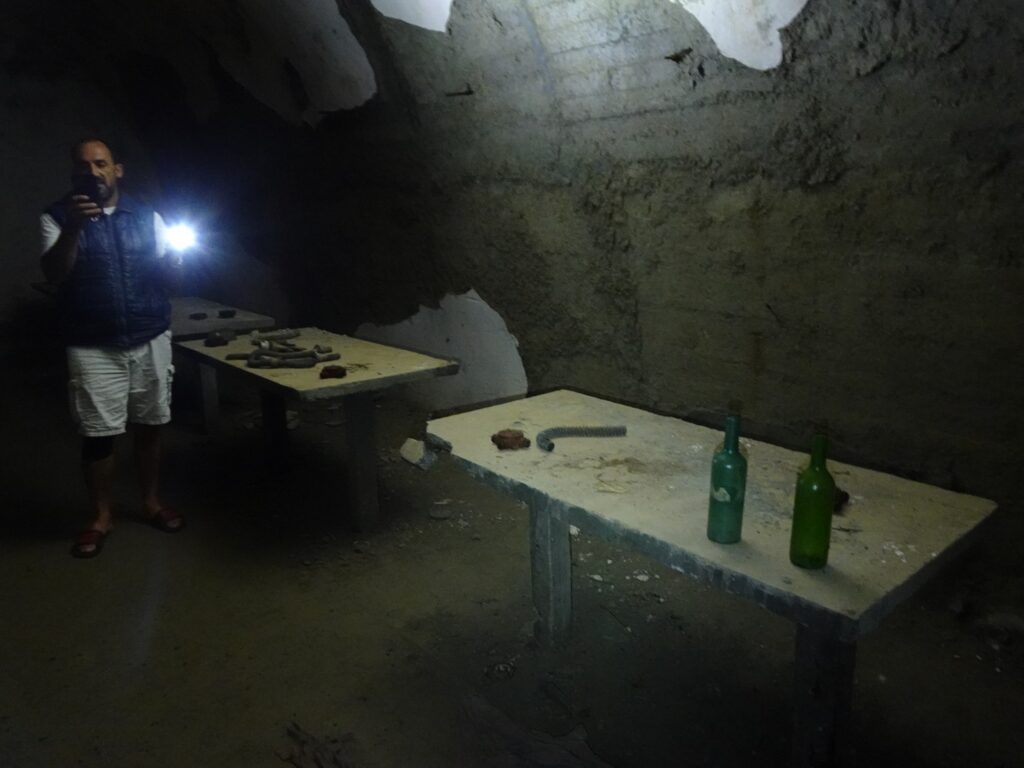
This attack never happened, so parts of the complex were simply used for military drills and others not at all. Parts of this underground city can be explored by taking a tour with local guide Afrim Cenaj, under whose childhood home the place lies.
The tour costs 1000 Lek, and we found it super interesting, not least because of Afrim’s very enthusiastic way of showing us around, explaining everything we wanted to know. The entrance to the complex lies at the southern end of Kukës.
It’s best to contact Afrim through WhatsApp (+355 68 552 0330) and he’ll meet for the tour at his family business in Rruga Adem Jashari. The tour takes about an hour.
Abandoned Tourism Center in Kukës
We really found Kukës to be a paradise for Urban Exploration. Just about a kilometre from the entrance to the Underground City sits this large abandoned hotel complex and tourism centre, which was built in the 1980s as part of a state effort to open the north of Albania to domestic visitors.
Unfortunately, it opened right as the country’s communist system collapsed, and by 1996 it was already shut down. Since then, it’s been left to crumble slowly, the concrete balconies overgrown with weeds and the interior stripped of furniture and fittings.
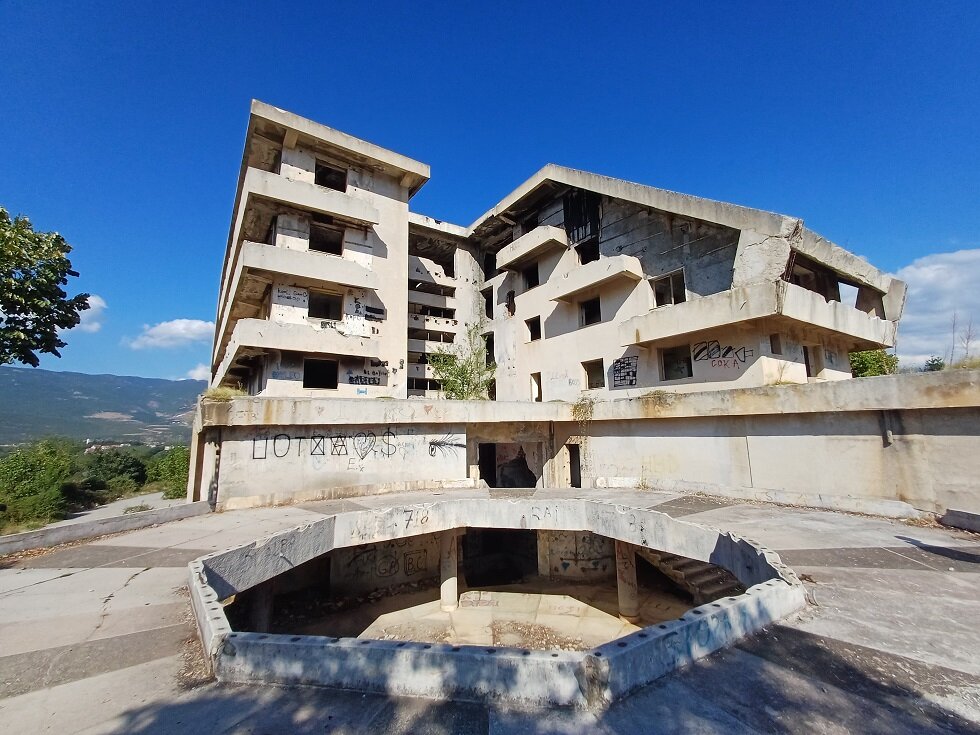
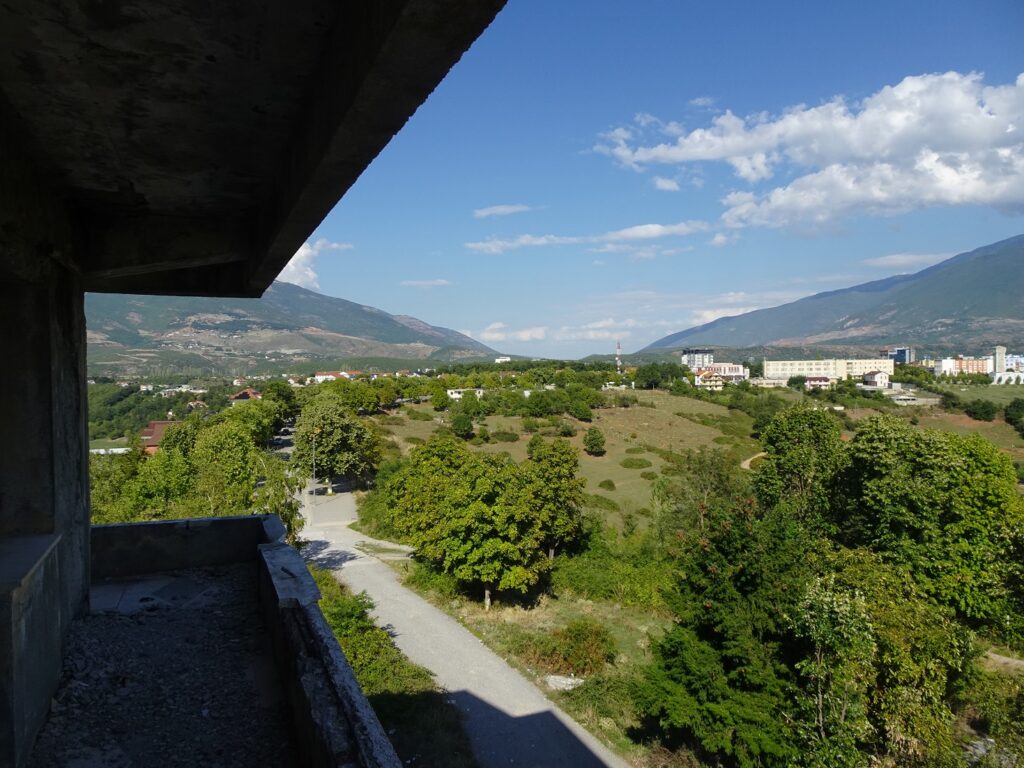
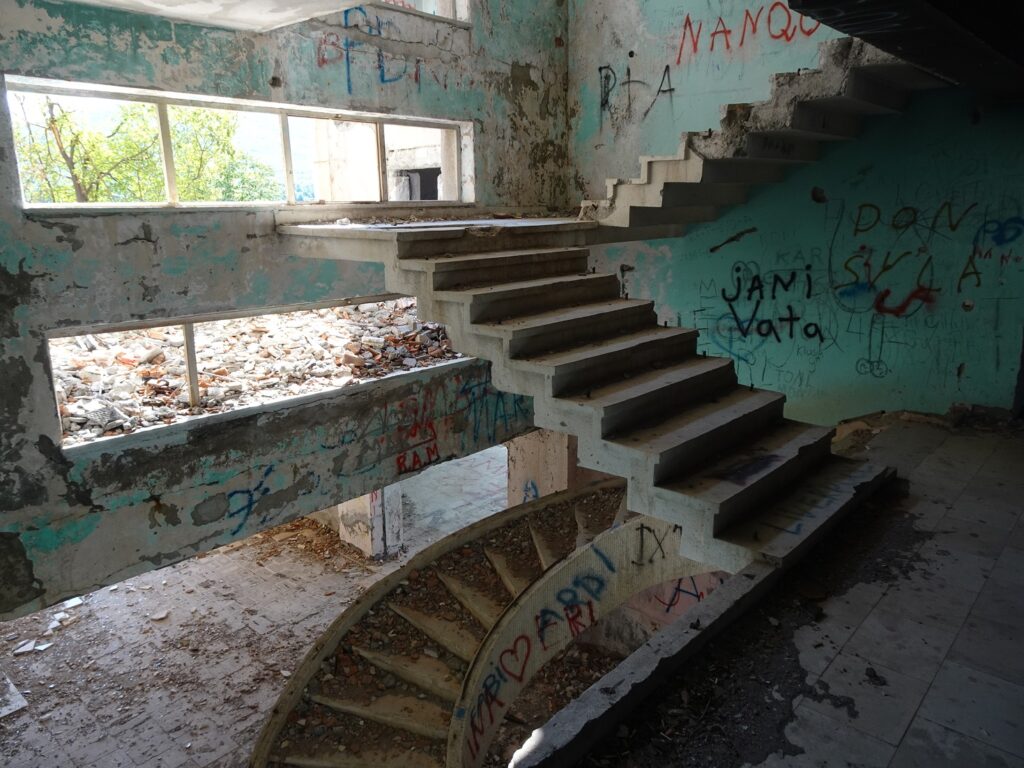
As with Durrës’ Villa Zogu, one of the best parts of exploring the complex are the amazing views from the balconies on the upper floors, but there are also some cool details inside. Our favourite was the dining room in the back of the ground floor, which still has some surviving paintings featuring animals and scenes of traditional village life.
Outside, there’s an overgrown garden with two empty pools and a covered circular structure, which once might have held a bar or café. The hotel sits on a small peninsula at the western edge of town, just east of the two bridges, and is completely open to anyone who wants to explore it.
Fier Power Station
This huge, impressive power station near Fier in south-western Albania served during the industrial push in the communist era and beyond from the 1960s onwards until it was decommissioned in 2007.
Some buildings on the grounds are still in use, but large parts of it have been abandoned. The interiors of the buildings have mostly been stripped of any machinery, but walking around the large, empty halls and cooling towers gave us a distinct post-apocalyptic feel.

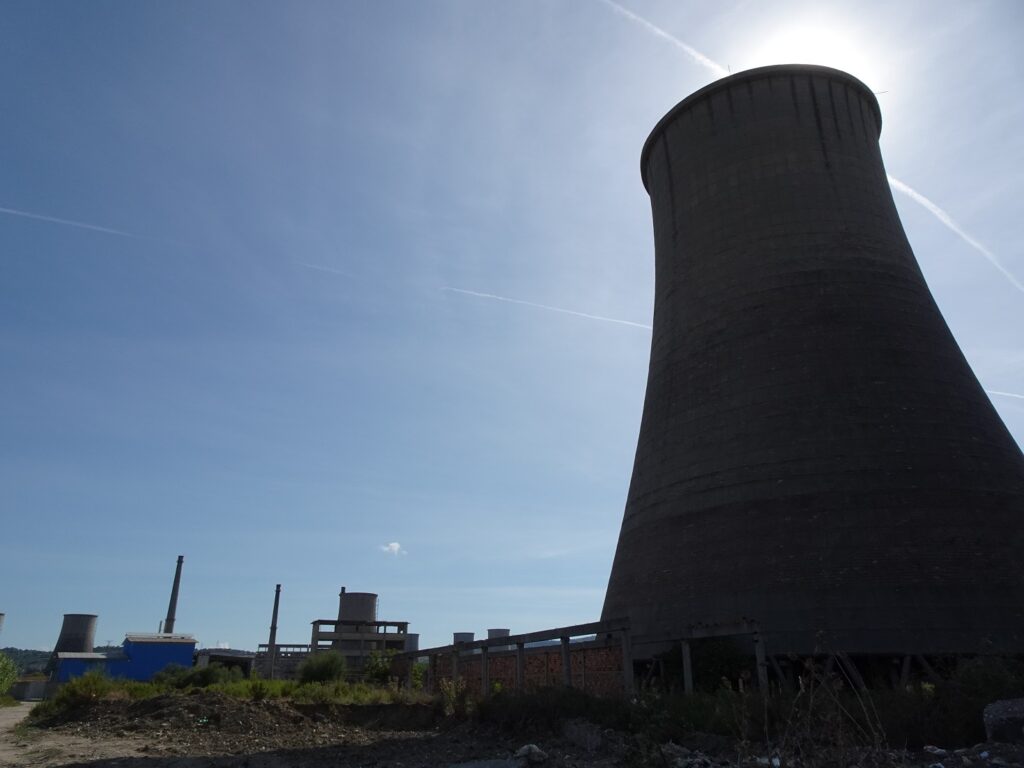
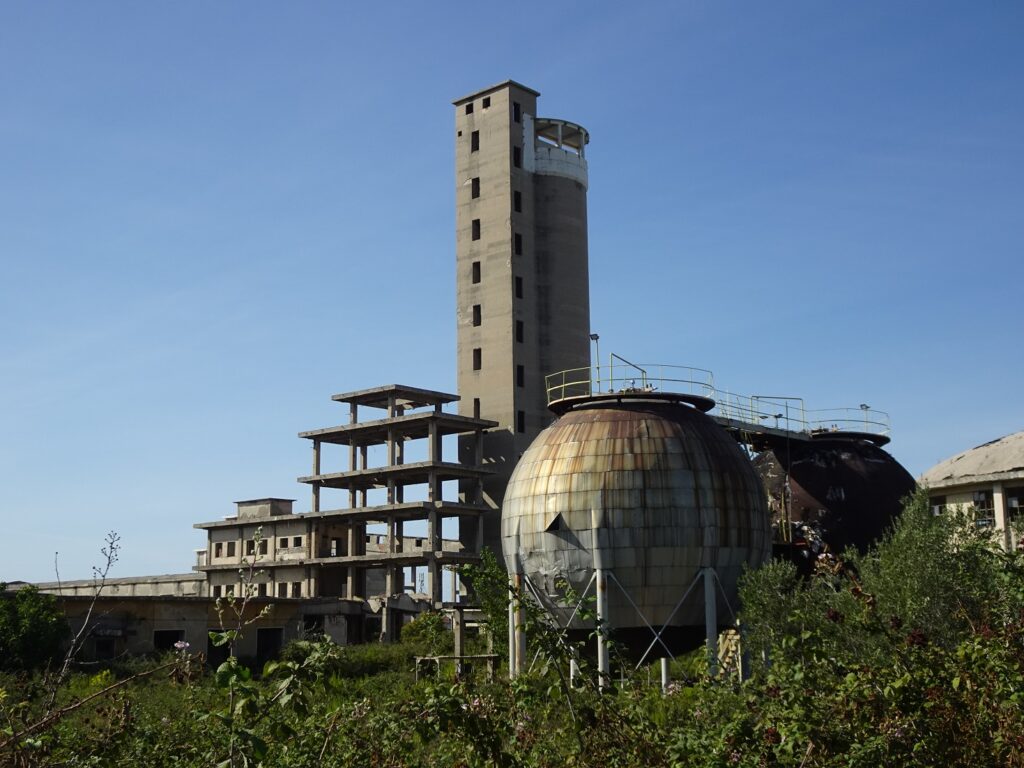
The complex sits at the southern edge of Fier and the grounds are completely open along the entire eastern side. We encountered some slightly aggressive stray dogs in the area, but I think they were more afraid of us than we were of them. Still, it’s probably best to not go alone and to carry a stick, just in case.
We read online, that there sometimes are people hanging around in the area who are willing to give you a tour of the place for a fee, but we didn’t encounter a soul here, so we can’t confirm that.
Bunkers All Over the Country
Something that’s impossible to miss while exploring Albania are the huge number of small concrete bunkers all over the country. From the 1960s through the 1980s, Albania’s communist government ordered the construction of thousands of these bunkers across the country.
Like Kukës’ Underground City, the reason was to prepare for a potential invasion, which never happened, so now they’re just a constant reminder of an insane waste of resources and the generally paranoid political clime during the Cold War.

We stumbled across these domed, vaguely mushroom-shaped bunkers everywhere we went, but we saw the biggest concentrations around Valbonë in the very north-eastern part of the country, where there are plenty of them right next to the road leading through the valley.
They all have the same interior structure and there’s never a lot to see inside, but I thought that they frequently made for good photo motives, because of the stark contrast between the ugly structures and the often beautiful natural surroundings.
Map of Albania’s Abandoned Sites
The places I’ve described in this post can all be found in this map of Albania.
See Also
A Complete Guide to Taking Albania’s Komani Lake Ferry, With or Without a Car
